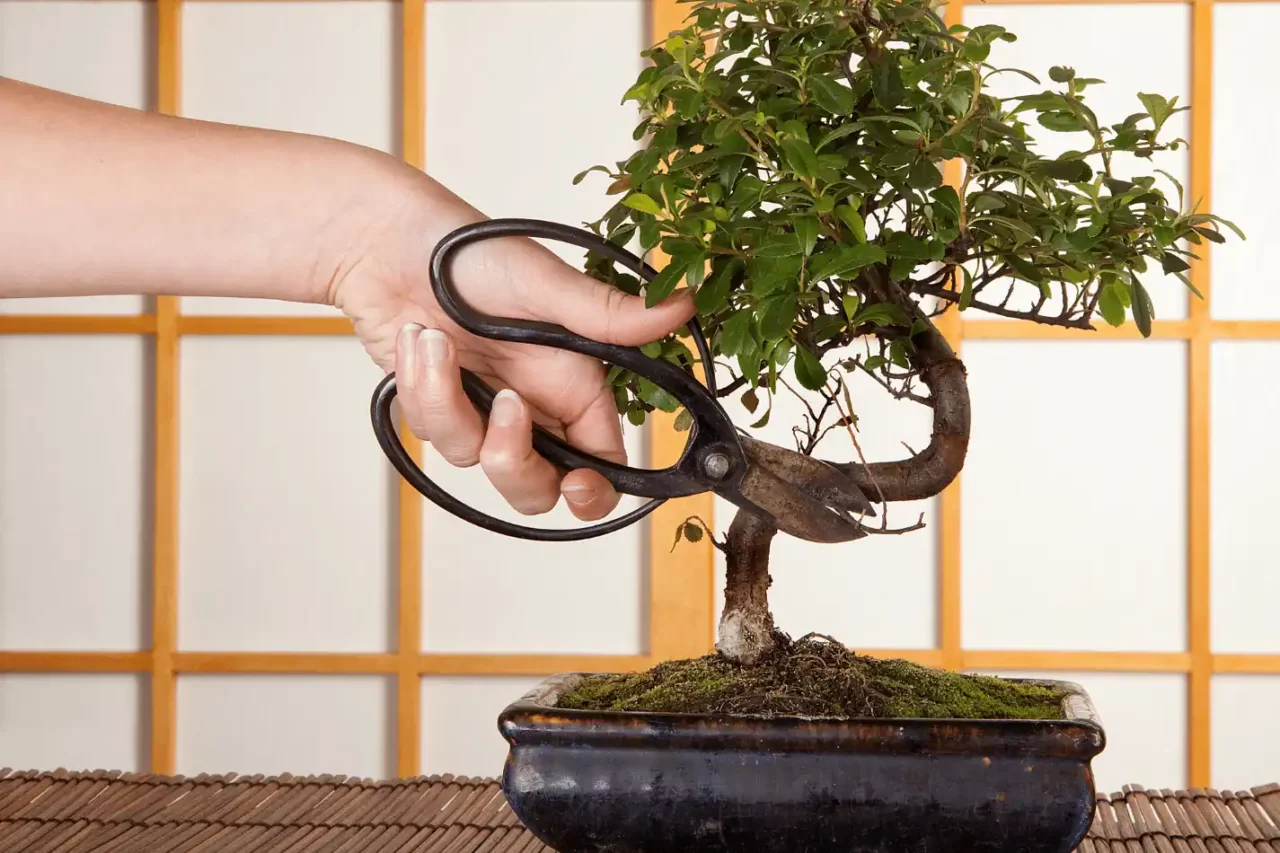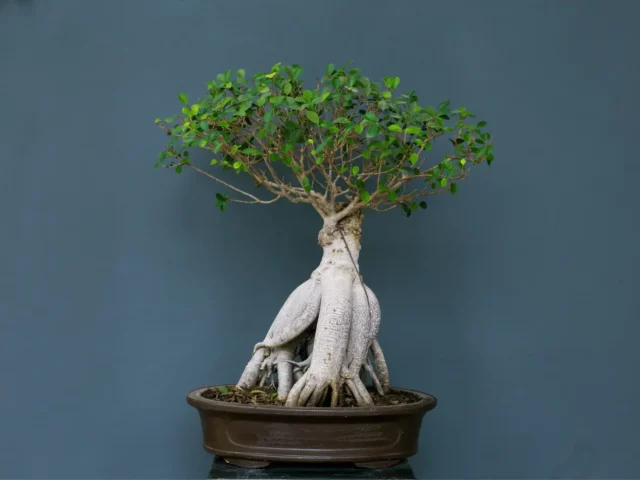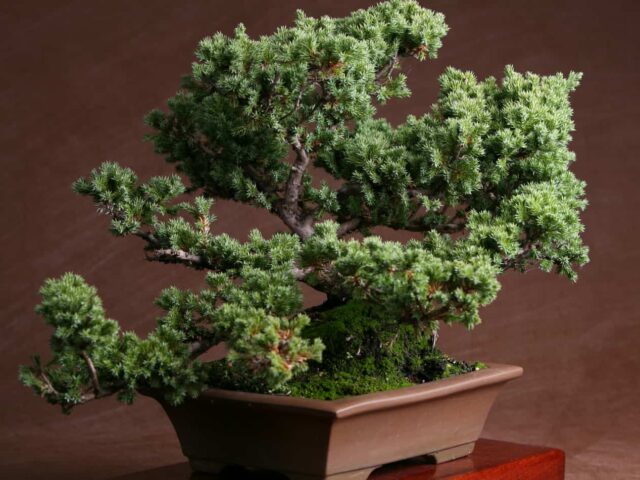Pruning bonsai is essential to get the ideal form and size. Cutting branches and foliage is therefore a necessary aspect of bonsai cultivation. These cuts often create scars that may or may not heal naturally. However, many bonsai growers use cut paste to lessen the scars. But, is bonsai cut paste necessary?
It is not mandatory to use cut paste to heal the pruned areas of a bonsai. But if you want to minimize scarring and protect the cut from infection, you may use cut paste or putty on a bonsai wound.
In this article, I’ll discuss whether or not cut paste is required for bonsai scar healing. I’ll also go through how to prune a bonsai and how to apply cut paste on wounds to prevent scarring. Before that, let us know what cut paste is first!

What Does Cut Paste Mean For Bonsai?
Cut Paste is a thick paste used to cover the wounds of trees or bonsai. Thus, it is also known as wound paste or wound sealer. Similar to bonsai, the origin of cut paste is also from Japan.
There are two types of cut paste available in the market. These are:
- Clay-based putty or paste
- Cream paste
The clay-based cut paste is thick, and you have to knead it well to apply it to the cut. These are mainly for filling up hollow and irregular wounds. On the other hand, there is the cream cut paste. These are for flat cuts or plane surface cuts on the tree bark.
Both have the same function: covering wounds under the bark so the bonsai can heal faster. If the clay works as a Band-Aid, then the cream paste works as an antiseptic cream. They are quite easy to apply.
Is Cut Paste Necessary For Controlling Scar Tissues Of Bonsai?
So, is it necessary to use the cut paste on the wounds of bonsai? It is a bit controversial. But people have already seen how nicely cut pastes work on bonsai wounds.
To shape the bonsai, you need to cut or shorten branches. As a result, a small or large hollow will form. The inner Cambium layer of the tree gets exposed to contamination. Many people may say you should let your bonsai wounds naturally heal.
But these wounds often turn into scars and heal irregularly. Hence, it does not look pleasing on the bonsai.
These hollow wounds take years to get covered. Moreover, sometimes, these cuts are at risk of infection and dieback. But you can cover that area with cut paste because it can contain healing properties.
Various ingredients are used to make cut pastes, but it is better to use the ones having natural ingredients. You can either buy pre-cut pastes from stores or make them at home. Common ingredients for cut pastes are starch, beeswax, mineral oil, plasticine, vegetable oil, and drying agents.
Thus, they are water-resilient, flexible, and semi-solid after drying. Some ingredients, like minerals, have healing components. They help to fight insects and bacteria. As a result, the wound heals nicely compared to exposing it to just sun and air.
If you let the wound heal naturally, some parts of it might get affected by insects or infection. The wound may heal with irregular scar tissues.
When you apply cut paste, it keeps the part of the tree protected. It keeps the area moist but not wet. Then, the part of the bonsai does not contract or get infected. As a result, the scar tissue forms a pattern.
How To Prune A Bonsai To Control Scar Tissue?
Using cut paste on the wounds of the bonsai is not enough to control the growth of the scar tissue. You should also know how to cut the branches and trunks. Proper pruning is crucial for the aesthetic beauty of your bonsai.
Here are the tools you need to prune or cut a bonsai:
- Secateurs
- Angled cutter
- Fine Saw
- Concave cutter
- Sharp modeling knife
- Scissors
- Cut Paste (Clay)
Apart from these, you may need other tools to cut the excessive parts of your bonsai. If you are not sure how to cut a branch and apply cut paste, here is what you can do:
How To Cut A Branch And Apply Cut Paste
Before pruning your bonsai, you must be sure why you are doing it. Instead of cutting randomly, think about what you want.
You may cut or trim a bonsai for three reasons: removing unwanted branches or foliage, boosting growth, or maintaining a style.
You should be sure because the scars formed by the cut will affect the bonsai’s appearance.
Now, here is how you prune a branch:
- First, choose an unwanted branch of a bonsai. Then, take secateurs and cut the branch close to the trunk or stem of the bonsai. You can also use an angled cutter instead of secateurs.
- To cut a thick and large branch, use a fine saw and cut the branch as close to the trunk as possible. And if you are cutting soft branches, you should use scissors to cut faster.
- There will be a stub of the branch left behind on the trunk. To remove it, you need a concave cutter. You have to cut it slowly in small steps. Otherwise, you might damage the nearby parts of the bonsai.
- The wound has to be hollow, but you must not make it too wide or too deep. Use a sharp curved modeling knife to clean up and shape the wound.
- Take some cut paste. In this case, you will need clay-based paste to fill in the hollow wound. Knead the paste, and put it on the wound.
Remember, the paste will eventually dry and shrink. Thus, it will get level with the tree. Over time, the healed layer and callus will push out the clay.
Some More Tips On Pruning And Controlling Scar Tissue
- You have to determine what type of bonsai you have and how it reacts to pruning.
- Do not scissor cut the branches downward and do not leave the remaining stump on the bonsai.
- Cut the branches upwards and clear the stump with a knife.
- Do not remove too much from your bonsai at once. It affects the healing process and the scarring as well.
- Use cream cut paste for flat surface cuts like antiseptic on a wound. Only deep wounds need clay-based putty to feel in
- You must apply cut pastes to the wound right after you finish cutting the area. The longer you wait, the more the inner area of the trunk stays exposed to the outside. Hence, bacteria and insects will infect it.
- Do not prune unhealthy bonsai trees with few branches and leaves. You should only cut bonsai trees that have a high growth rate and overly grown branches.
- Most importantly, use clean and sterile cutting equipment to cut the branches. Or else, the bonsai will get infected with bacteria. Hence, it will create abnormal scar tissue.
Conclusion
So, is bonsai cut paste necessary? I hope you got your answer by now. People often have different opinions about using things. However, cut paste has some benefits for pruning bonsai.
Next time you cut a branch, use cut paste to see how it affects your bonsai. Then, you can be sure about the role of cut paste in controlling scar tissue.






